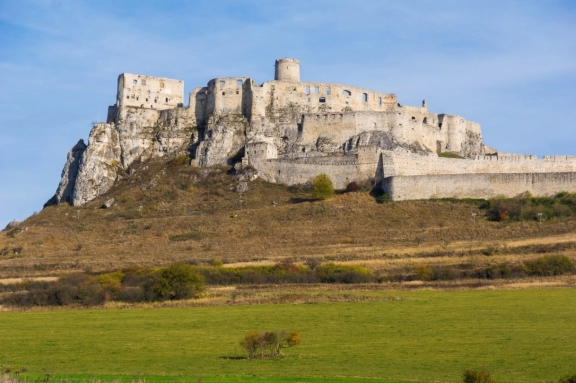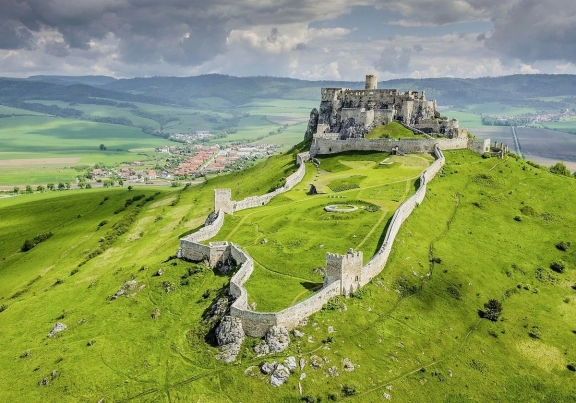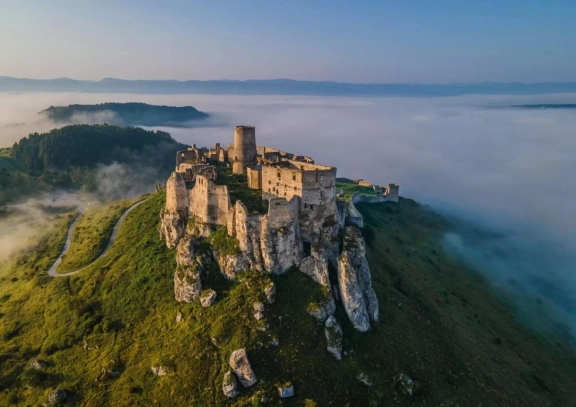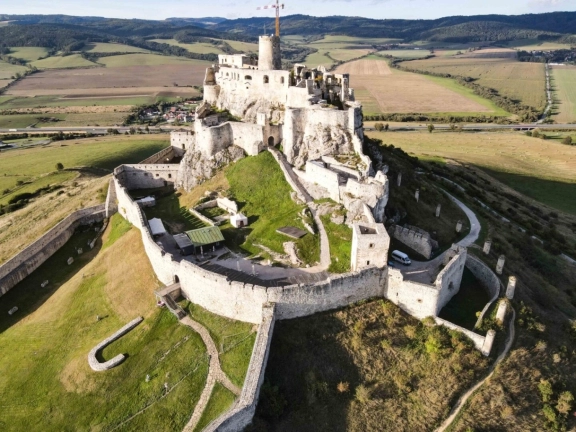Brief history of the Spiš Castle
It was included on the UNESCO World Heritage List in 1993 (together with the adjacent locations of Spišská Kapitula, Spišské Podhradie and Žehra).
Spiš Castle was built in the 12th century on the site of a previous castle. It was a political, administrative, economic and cultural centre of Szepes (Spiš) County of the Kingdom of Hungary.
Before 1464, it was owned by the kings of Hungary, afterwards (to 1528) by the Zápolya family, theThurzó family (1531–1635), the Csáky family (1638–1945), аnd (since 1945) by the state of Slovakia. Originally a Romanesque stone castle with fortifications, a two-story Romanesque palace and a three nave Romanesque-Gothic basilica were constructed by the the end of the second half of the 13th century.
The second extramural settlement was built in the 14th century and thus the castle area was doubled. The castle was completely rebuilt in the 15th century; the castle walls were heightened and the third extramural settlement was constructed.
A late Gothic chapel was built around 1470. The Zápolya clan contributed to the late Gothic transformations, which remade the upper castle into a comfortable family residence, typical late Renaissance residence of the 16th and 17th century.
The last owners of the Spiš Castle, the Csáky family, abandoned the castle in the 18th century because they considered it to be too uncomfortable to live in. They moved nearby to the newly built village castles/palaces in Hodkovce near Žehra and Spišský Hrhov.
In 1780, the castle burned down, and has been deserted ever since.
The castle was partly reconstructed in the second half of the 20th century. An extensive archaeological research was carried out on the site. The reconstructed sections house displays of the Spiš Museum.



